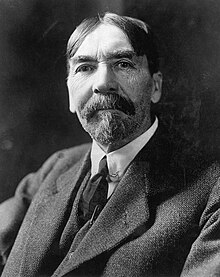
Back استهلاك تفاخري Arabic Дэманстратыўнае спажыванне Byelorussian Demonstrativní spotřeba Czech Geltungskonsum German Consumo conspicuo Spanish مصرفگرایی خودنمایانه Persian Kerskakulutus Finnish Consommation ostentatoire French Sýnineysla Icelandic Consumo ostentativo Italian

| Part of a series on |
| Anti-consumerism |
|---|
In sociology and in economics, the term conspicuous consumption describes and explains the consumer practice of buying and using goods of a higher quality, price, or in greater quantity than practical.[1] In 1899, the sociologist Thorstein Veblen coined the term conspicuous consumption to explain the spending of money on and the acquiring of luxury commodities (goods and services) specifically as a public display of economic power—the income and the accumulated wealth—of the buyer. To the conspicuous consumer, the public display of discretionary income is an economic means of either attaining or of maintaining a given social status.[2][3]
The development of Veblen's sociology of conspicuous consumption also identified and described other economic behaviours such as invidious consumption, which is the ostentatious consumption of goods, an action meant to provoke the envy of other people; and conspicuous compassion, the ostentatious use of charity meant to enhance the reputation and social prestige of the donor;[4] thus the socio-economic practices of consumerism derive from conspicuous consumption.[5]
- ^ Phillips, Ronnie J. 2014 April 22. "Conspicuous consumption." Encyclopedia Britannica.
- ^ Veblen, Thorstein (1899). The Theory of the Leisure Class. Project Gutenberg.
- ^ The New Fontana Dictionary of Modern Thought, Third Edition, Alan Bullock, Stephen Trombley, Eds., 1993, p. 162.
- ^ West, Patrick (2004). Conspicuous Compassion: Why Sometimes It Really Is Cruel To Be Kind. London: Civitas, Institute for the Study of Civil Society. ISBN 978-1-903386-34-7.
- ^ Kenton, Will. "Conspicuous Consumption". Investopedia. Retrieved 2021-05-10.
© MMXXIII Rich X Search. We shall prevail. All rights reserved. Rich X Search